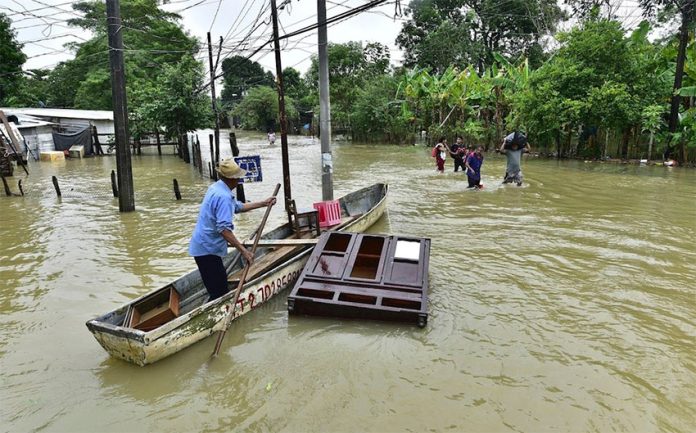Former president Enrique Peña Nieto failed to keep his promise to spend almost 20 billion pesos on flood prevention projects in Tabasco.
The Institutional Revolutionary Party president pledged to spend 19.93 billion pesos (just under US $1 billion at today’s exchange rate) on infrastructure projects in the Gulf coast state, much of which has faced severe flooding in recent days.
But between 2015 and 2018 – the last four years of Peña Nieto’s six-year term and the period during which the money was supposed to be allocated to the projects – only 2.8 billion pesos, or 14% of the pledged total, was spent.
A review of public spending conducted by the newspaper Milenio found that the former government allocated 1.1 billion pesos to the Tabasco Hydraulic Program (Prohtab) in each of 2015 and 2016 before funding dropped to 599 million pesos in 2017.
In 2018, not a single peso was allocated to Prohtab.

The current federal government, which took office in late 2018, allocated 500 million pesos to flood prevention projects in Tabasco last year and 199 million pesos in 2020. It has only budgeted 90 million pesos for such projects in 2021.
The director of the National Water Commission (Conagua) in Tabasco said in an interview that a lot more investment is needed to prevent future flooding in the state.
“We still need [more] bordos [roughly-built dams], flood walls and drains … in order to stop floods in the state of Tabasco,” Felipe Irineo Pérez said. “[Prohtab] started in 2015 but there was hardly any investment.”
Tabasco Governor Adán Augusto López Hernández charged that all Prohtab achieved was to create “new generations of millionaires.”
He said that complaints have been filed against Conagua officials who received resources to build projects that never came to fruition. President López Obrador announced this week that his government would implement a new plan to stop recurrent flooding in Tabasco and Chiapas.
Former presidents Vicente Fox and Felipe Calderón spent 2 billion pesos and 9.4 billion pesos, respectively, on flood prevention projects in Tabasco during their six-year terms, according to Milenio. But the projects were insufficient to put an end to frequent flooding, and some of the funds allocated to Conagua in Tabasco during both men’s presidencies were allegedly embezzled.
In 2007 – the first full year of the Calderón administration – about 80% of the state’s territory was flooded and inundations, albeit not as severe, continued in subsequent years. Recent flooding in some parts of the state is the worst in living memory.
The army, navy, National Guard, police and Civil Protection authorities have been deployed to affected parts of Tabasco to help residents evacuate their homes and provide humanitarian assistance. But residents of some flooded communities have been waiting in vain for days despite López Obrador’s pledge that his government would “always help” those affected.
One town that appears to have been forgotten is Tepetitán, the president’s birthplace.
Source: Milenio (sp)
